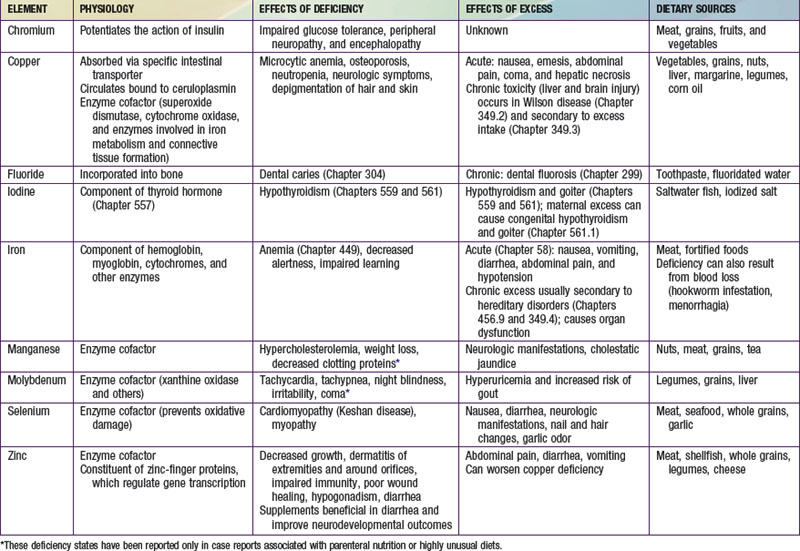Chapter 51 Micronutrient Mineral Deficiencies
Micronutrients include vitamins (![]() Chapters 45–50) and trace elements. By definition, a trace element is <0.01% of the body weight. Trace elements have a variety of essential functions (see Table 51-1 on the Nelson Textbook of Pediatrics website at www.expertconsult.com). With the exception of iron deficiency, trace element deficiency (see Table 51-1) is uncommon in developed countries, but some deficiencies (iodine, zinc, selenium) are important public health problems in a number of developing countries. Because of low nutritional requirements and plentiful supply, deficiencies of some of the trace elements are extremely rare in humans and typically occur in patients receiving unusual diets or prolonged total parenteral nutrition without adequate delivery of a specific trace element. They can also occur in children with short bowel or malabsorption. Excess intake of trace elements (see Table 51-1) is uncommon, but it can result from environmental exposure or overuse of supplements.
Chapters 45–50) and trace elements. By definition, a trace element is <0.01% of the body weight. Trace elements have a variety of essential functions (see Table 51-1 on the Nelson Textbook of Pediatrics website at www.expertconsult.com). With the exception of iron deficiency, trace element deficiency (see Table 51-1) is uncommon in developed countries, but some deficiencies (iodine, zinc, selenium) are important public health problems in a number of developing countries. Because of low nutritional requirements and plentiful supply, deficiencies of some of the trace elements are extremely rare in humans and typically occur in patients receiving unusual diets or prolonged total parenteral nutrition without adequate delivery of a specific trace element. They can also occur in children with short bowel or malabsorption. Excess intake of trace elements (see Table 51-1) is uncommon, but it can result from environmental exposure or overuse of supplements.
Stay updated, free articles. Join our Telegram channel

Full access? Get Clinical Tree



